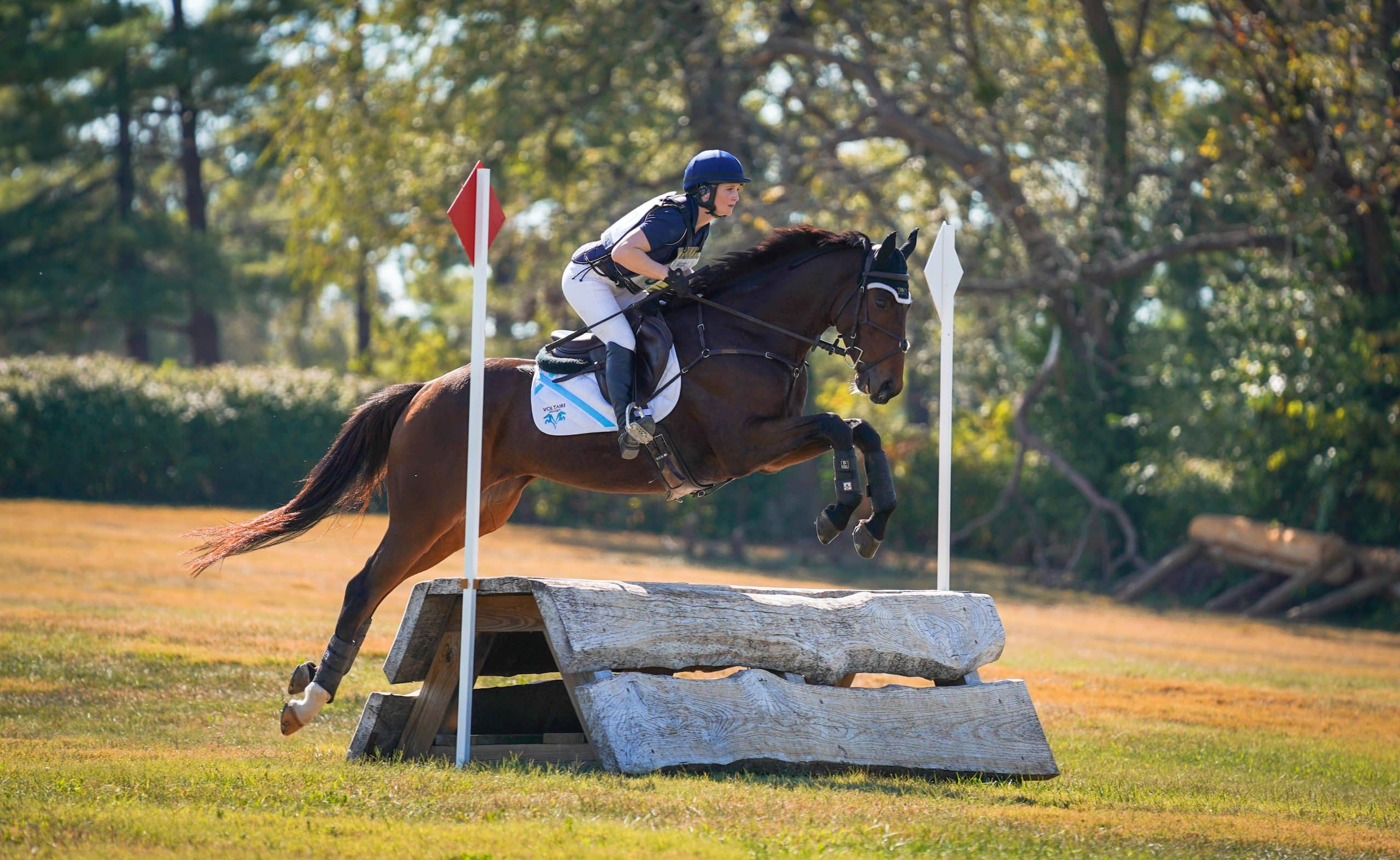
Napravnik says one of her favorite ways to introduce jumping to an OTTB is with natural cross-country fences. Photo by Canterclix
Q: I have an OTTB I’d like to develop as a show jumper, but he’s pretty sloppy over small fences. I’ve been told by others at my barn that he just needs to jump bigger fences and he’s not being challenged enough, but he hits so many rails with his front end I’m nervous about putting the fences up. What should I do to help him get more careful?
A: This is such a great question and a common situation to experience. In most cases this does not mean the horse is lacking in talent. Especially when working with OTTBs, remember two things: So long as they are cleared to jump at a certain height, Thoroughbreds are generally athletic enough that most of them barely have to make an effort over a fence up to 3 feet and, because they are highly intelligent, they might get bored easily.
This is probably why you’ve heard raising the jumps might help. I don’t disagree with this approach, though feeling nervous about putting the jumps up is a valid concern. Raising the jumps can get the horse’s attention and inspire him to make more of an effort. If you are not comfortable raising the jumps, there are other things you can do. Using solid jumps, for instance, is a great way to get the horse’s attention. One of my favorite ways to introduce jumping in the very beginning is with cross-country fences. These fences are more natural for the horse to jump than show-jumping rails, and tapping one with their toe might be a bit more meaningful to them than hitting a rail that just falls down. Of course, if you don’t have access to cross-country fences, you can use solid fillers under the jumps in your arena. Make sure to provide a ground line to help the horse understand where and when his feet should leave the ground.
Sometimes the smarter horses become a bit trickier because they can get bored more easily. Without raising the jumps, if you make the jump look different almost every time you jump it, it will keep things interesting for your horse. One way to make things different is to use placing poles and/or V poles (placed like a V with one end of each pole in the middle of the front rail of the jump, making the point of the V, and the other end of each pole angled out toward the standard). Changing where you put placing poles on the ground before and/or after the fence can help as well. Of course, you might need a quick-moving and committed friend or instructor on the ground to help you school over fences.
If your horse is having rails because he is not sure where to put his feet in preparation for takeoff, then gymnastics exercises can help because they are made to set the horse’s strides up just right. The book “Modern Gymnastics” by Jim Wofford is a great tool to give you lots of ideas about what gymnastics might help your horse. You can even use fillers in your gymnastics exercises.
Rosie Napravnik is a champion jockey turned OTTB advocate and eventer. She transitions horses retiring from racing at her Rosie Napravnik Off-Track Sporthorses, in Simpsonville, Kentucky.

